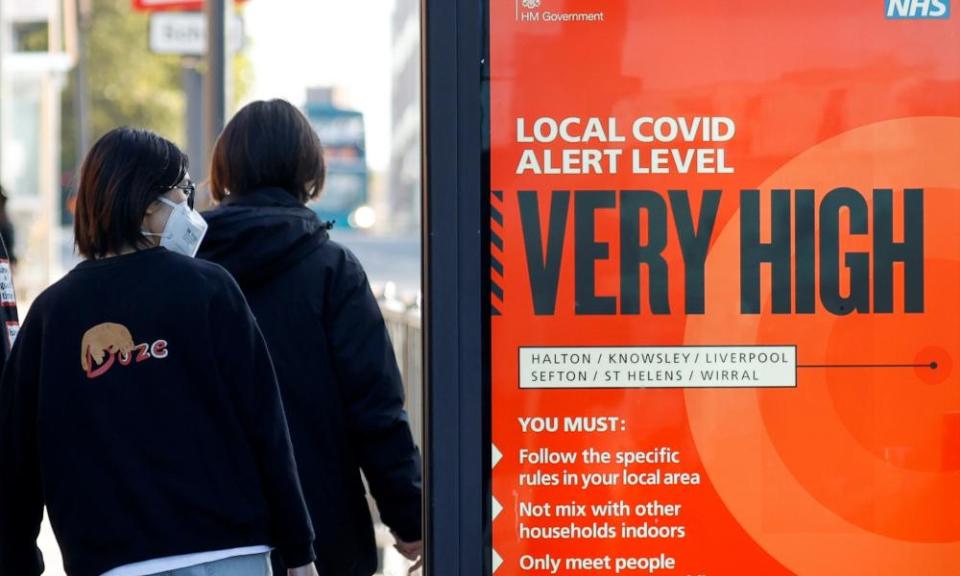Tier 3 lockdown rules in England: latest coronavirus restrictions explained
Watch: How England's new three-tier COVID system will work
The government has announced that areas in England deemed to require additional precautionary measures against the spread of coronavirus will be placed in one of three tiers of restrictions.
These go from tier 1, where the risk of coronavirus spread is described as medium, to tier 3, where the risk is described as very high.
South Yorkshire, Greater Manchester, Lancashire, Warrington and Liverpool City Region including Knowsley, Wirral and St Helens are all at the highest level of restrictions.
Tier 3 restrictions will come into force for Nottingham at 12.01am on Thursday 29 October. By the end of the week, 8.2 million people will be living under tier 3 restrictions, or one in seven people in England.
These local lockdown restrictions are on top of the general advice and guidance given in England on how to protect yourself against contracting the virus – frequent washing of hands, the use of face coverings on public transport and within enclosed spaces, and social distancing by staying at least 2 metres apart.

For areas in tier 3, the additional restrictions mean:
People are prohibited from socialising with anybody they do not live with, or have not formed a support bubble with, in any indoor setting, private garden or at most outdoor hospitality venues and ticketed events.
Tradespeople can continue to go into a household for work.
The rule of six continues to apply to outdoor public spaces, such as parks, beaches, public gardens or sports venues.
Pubs and bars are only permitted to remain open to operate as restaurants, in which case alcohol can only be served as part of a substantial meal.
Schools and universities remain open.
Places of worship remain open but household mixing is not permitted.
Weddings and funerals can go ahead with restrictions on the number of people attending (15 and 30 respectively), but wedding receptions are not allowed.
The rules for exercise classes and organised sport are the same as in tier 2. They can continue to take place outdoors, but will only be permitted indoors if it is possible for people to avoid mixing with others they do not live with (or share a support bubble with), or for youth or disability sport.
Travelling outside, or entering, a tier 3 area should be avoided unless for work, education or youth services, to meet caring responsibilities, or if travelling through the area as part of a longer journey.
Residents of a tier 3 area should avoid staying overnight in another part of the UK, while people who live in a tier 1 or tier 2 area should avoid staying overnight in a tier 3 area.
If you are living in an area that is in tier 3, the NHS Covid-19 app will say that you are in Local Covid Alert – Very High.
You can also check which level your area is rated at using the government’s own postcode checking service.
Due to the unprecedented and ongoing nature of the coronavirus outbreak, this article is being regularly updated to ensure that it reflects the current situation as best as possible. The most recent update will have been made at the date shown at the top of the article. Any significant corrections made to this or previous versions of the article will continue to be footnoted below in line with Guardian editorial policy.
Watch: What is long COVID?

 Yahoo Finance
Yahoo Finance 